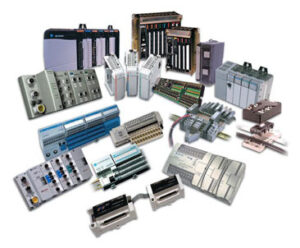RFID Library Automation: Boosting Efficiency and Security
In the rapidly evolving landscape of library management, the integration of Radio Frequency Identification (RFID) technology has emerged as a...

In the rapidly evolving landscape of library management, the integration of Radio Frequency Identification (RFID) technology has emerged as a game-changer. Libraries, both public and academic, are constantly looking for ways to improve efficiency, enhance user experience, and strengthen security. RFID library automation offers a comprehensive solution that addresses these goals by streamlining operations, reducing manual labor, and improving the overall management of library collections.
What is RFID?
RFID, or Radio Frequency Identification, is a technology that uses electromagnetic fields to automatically identify and track tags attached to objects. In the context of libraries, RFID tags are embedded in or attached to books, journals, DVDs, and other materials. Each tag contains a microchip and an antenna, allowing it to store data and communicate with RFID readers placed throughout the library.
Unlike traditional barcode system that require line-of-sight scanning and manual handling, RFID tags can be read from a distance and from multiple angles, even through book covers or stacks. This non-contact, high-speed data exchange provides a host of advantages in the library setting.
Enhancing Efficiency
One of the most significant benefits of RFID in libraries is the dramatic boost in operational efficiency. Manual processes such as check-in, check-out, inventory, and reshelving can be time-consuming and error-prone. RFID automation simplifies and accelerates these tasks.
- Self-Service Check-In and Check-Out: RFID enables patrons to borrow and return materials independently using self-service kiosks. These kiosks can process multiple items simultaneously, reducing wait times and freeing up staff for more complex tasks.
- Faster Inventory Management: With handheld RFID readers, staff can conduct inventory checks quickly and accurately without removing items from shelves. The reader scans items within range, instantly updating the system with current location and status.
- Automated Sorting Systems: Libraries can integrate RFID with automated sorting machines that identify and route returned items to the appropriate carts or bins, streamlining the reshelving process.
- Improved Cataloging and Circulation: RFID integration with Library Management Systems (LMS) ensures real-time updates and accurate tracking of items, making it easier to locate materials and manage collections.
Strengthening Security
Security has always been a concern in libraries, particularly when it comes to preventing theft and unauthorized removal of materials. RFID technology offers advanced security features that traditional systems struggle to match.
- Anti-Theft Detection: RFID tags can be encoded with security bits that trigger alarms if an item is removed without being properly checked out. Security gates installed at exits scan for these tags, deterring theft and loss.
- Real-Time Tracking: Because RFID readers can be placed strategically throughout the library, they can track the movement of items in real time. This makes it easier to monitor usage patterns, identify misplaced items, and locate missing materials.
- Tamper-Resistant Tags: Modern RFID tags are designed to be durable and tamper-proof, ensuring that once affixed, they remain intact and functional throughout the item’s life cycle.
Enhancing User Experience
RFID doesn’t just benefit staff—it also significantly improves the patron experience. Faster transactions, reduced wait times, and better service all contribute to higher user satisfaction.
- User-Friendly Kiosks: With intuitive interfaces, RFID kiosks allow patrons to check out or return items in seconds. Some systems also enable users to renew books, pay fines, or get account updates on the spot.
- Efficient Holds and Reservations: RFID simplifies the management of reserved materials. Items can be automatically sorted and shelved in designated hold areas, and users receive real-time notifications.
- Interactive Wayfinding: Some advanced systems use RFID to support wayfinding solutions that help patrons locate books on shelves, especially in large libraries with extensive collections.
Implementation Considerations
While the benefits are clear, transitioning to an RFID system requires careful planning and investment. Libraries must weigh several factors before implementation:
- Cost: RFID systems involve upfront costs for tags, readers, software, and training. However, the long-term savings in labor and improved efficiency often offset the initial investment.
- Staff Training: Successful implementation depends on training library staff to use RFID tools effectively and adapt to new workflows.
- System Integration: The RFID system must seamlessly integrate with the library’s existing LMS to ensure data accuracy and consistency.
- Privacy Concerns: Some patrons may have concerns about data privacy. Libraries must ensure that RFID systems comply with privacy regulations and use encryption where appropriate.
Conclusion
RFID technology represents a significant leap forward in library automation, offering a winning combination of speed, accuracy, and security. By automating routine tasks and providing powerful tools for inventory management and user engagement, RFID helps libraries operate more efficiently and serve their communities more effectively. As the demand for smarter, more responsive library services grows, RFID will undoubtedly continue to play a central role in the digital transformation of libraries.






